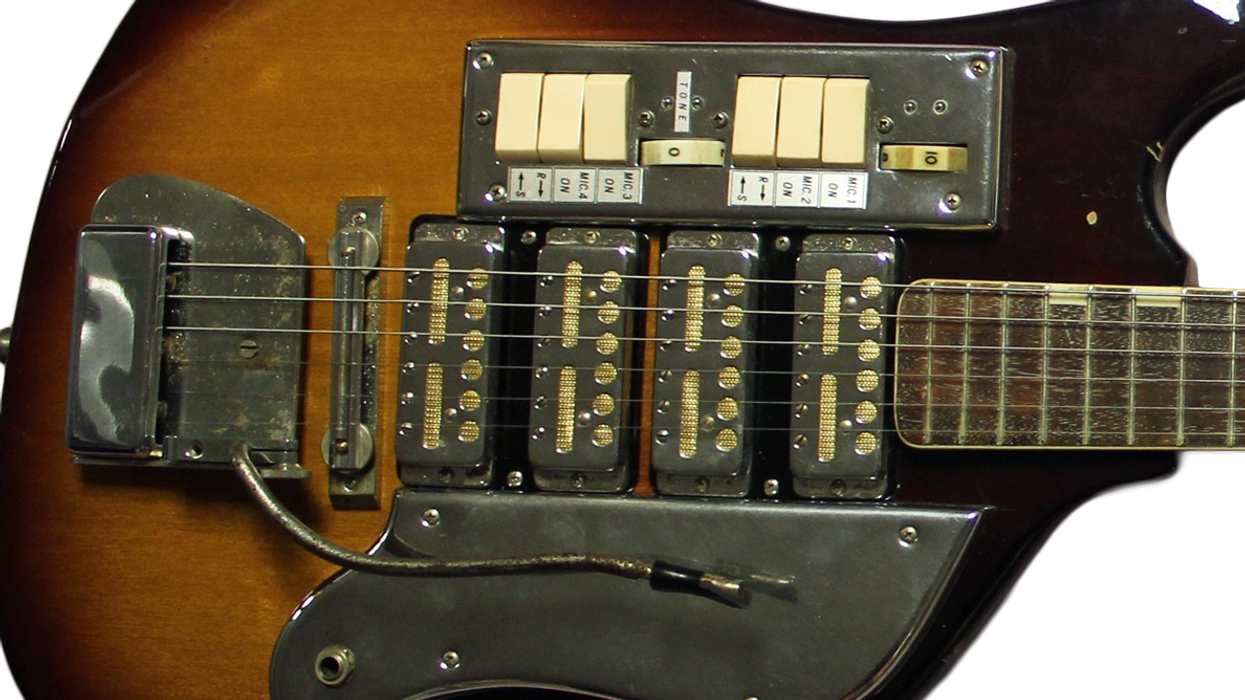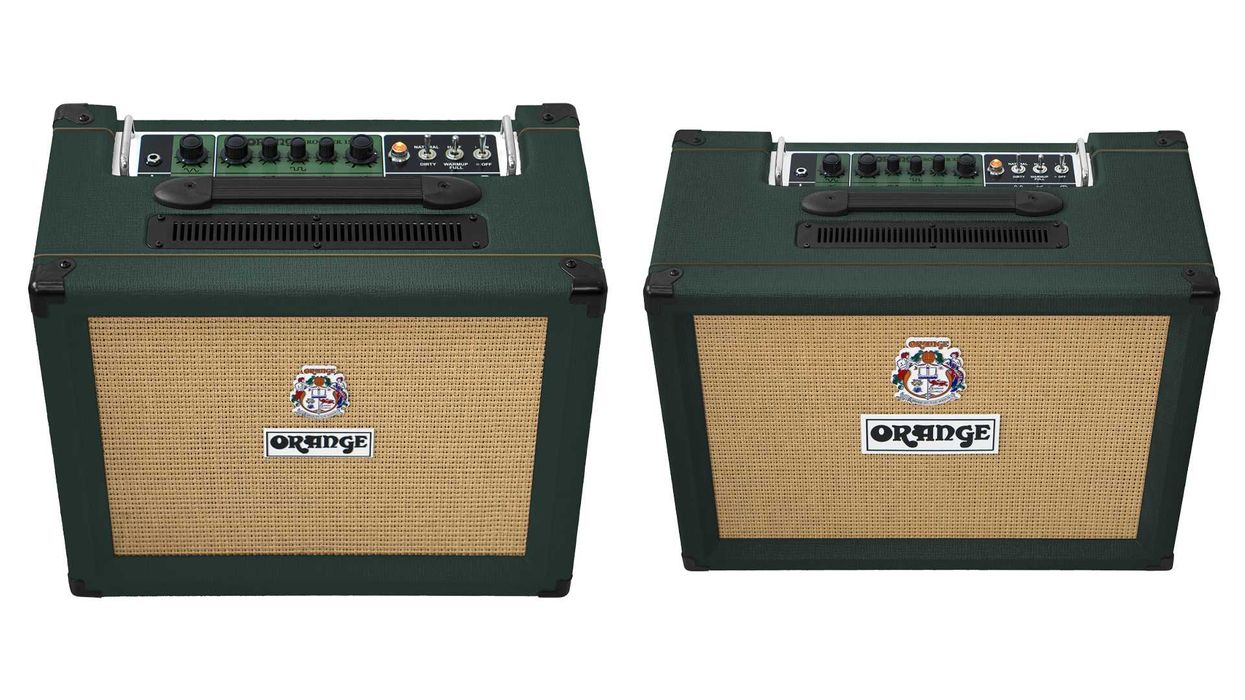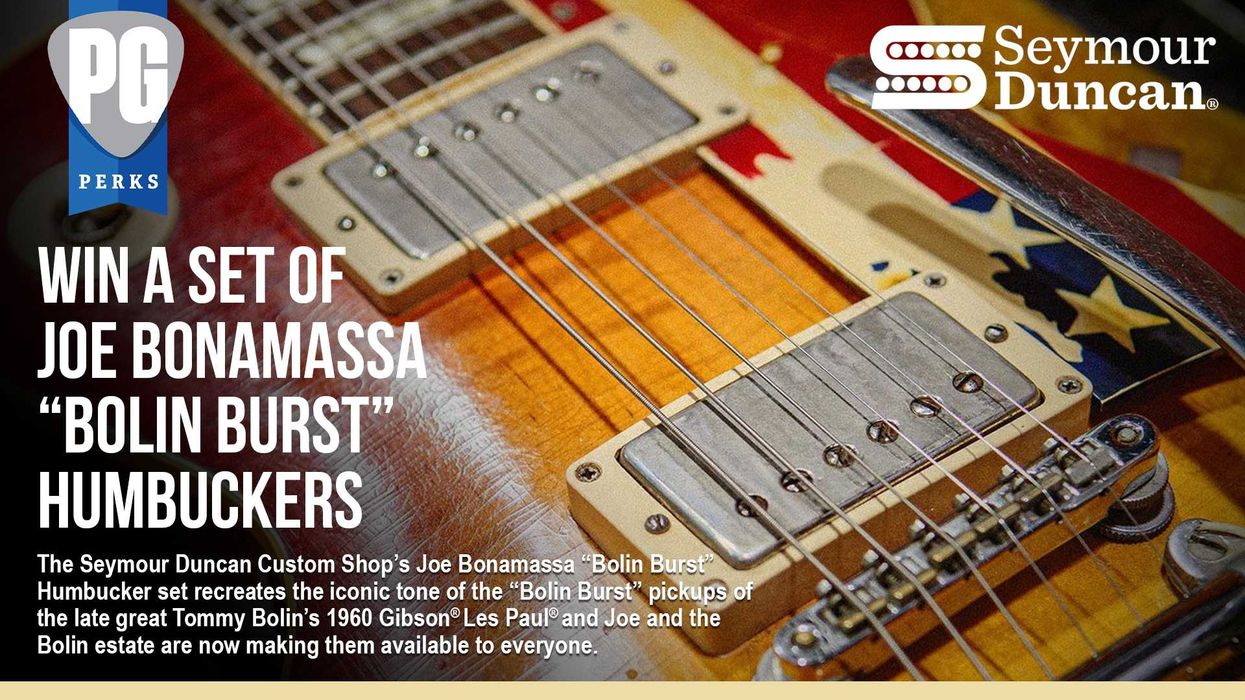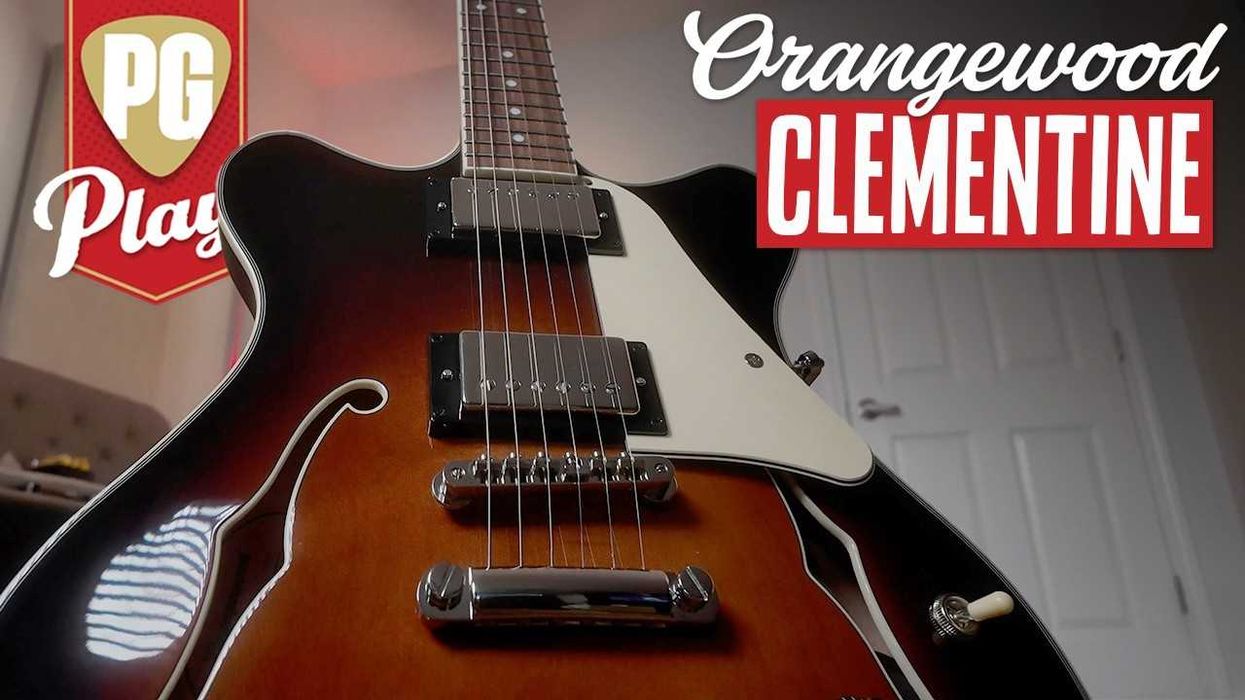Verso demo
Over the course of electric guitar history, there have been many experimental builds. Some have been successful and changed the path of guitar design, while others have come and gone, surfing the seas of change. The Verso Sine, though, lives in a third, less common category—an artistic realm populated by names like Wandre and Manzer, where visionary builders rule the roost.
Since launching Verso a handful of years ago, Germany-based builder Robin Stummvoll has caught the attention of intrepid design fans with his minimal, sheet-metal-bodied Cosmo guitar, Orbit baritone, and Gravis bass. His distinctive style is based on future-leaning aesthetics that also draw on the early history of electric guitar design—specifically Rickenbacker’s sheet-metal lap steels—as well as mid-century furniture and architecture.
With the Sine, Verso pushes further ahead. Aesthetically, this model would sit nicely in the design wing of a modern art museum, maybe across the hall from an Eero Saarinen exhibit. That alone is cause for excitement. But the Sine, described by Stummvoll as an “expressive guitar,” offers a playing experience unlike any other guitar I’ve laid my hands on. And that is the real experiment at the heart of this fantastic instrument.
Rethinking Guitar Design
Unlike its metallic siblings, the Sine is actually made of a solid ash body with a set neck—available as ash, maple, cherry, oak, or walnut—with the option of a 16" or compound 9 1/2"–16" radius. The Sine Pad, a 1 mm-thick piece of bent sheet metal that’s affixed to its body, serves as the guitar’s top and home to the pickups.
The Sine Pad opens up a world of possibilities that are game-changing, highly innovative, and practical. First, there’s the pickups. Since the Sine Pad is powder-coated steel, the magnetic pickups cling to the top without needing to be permanently affixed, so they can be moved in any direction. That means they can be shifted in relation to the strings to shift the tone. But thanks to stereo-output options (which are configured on the back of the guitar, where the guitar’s input jack is located, and where the pickups plug in via mini audio jacks), both of the Sine’s single-coil pickups can be moved so one pickup captures only the top strings and the other captures just the bottom. The resulting stereo imaging effects can be pretty wild.
Because the Sine Pad is a floating, spring-loaded piece of sheet metal and the brass bridge is independently situated on the body, you can also create volume-swell effects by pressing on the top without changing pitch. I found that a different kind of musical intuition comes into play when working with the Sine Pad. The control it offers is more nuanced and directly tied to my picking hand technique than what I would achieve with a volume pedal or knob. It’s a great tool for quick, expressive swells.
Volume isn’t the only control the Sine Pad has to offer. An onboard LEHLE EXPRESSION module is connected to the Sine Pad, with two expression outs (it’s also compatible with CV and USB MIDI) that I used to control pedals with expression options. Plugged into my Red Panda Tensor or Moog Minifooger MF Delay, I experienced a sense of effect control like never before. I tapped into delay times both subtle and extreme with the same intuitive gestures that controlled my chord and note attack. It’s something I haven’t been able to emulate without the Sine—a unique feeling almost like playing with a whammy bar for the first time.
The Essential Guitar-ness of the Sine
The Sine’s wild innovations wouldn’t mean much if it weren’t an excellent guitar. Sure, it looks completely unlike anything else. But holding the Sine in my lap, closing my eyes, and putting fingers to frets and strings, it’s a comfortable, playable instrument. It’s a little body-heavy, and the lack of curvature on the lap side means it can drift if you don’t sit with it centered. But those issues aside, the drawbacks are few.
The fretboard feels great, and there’s plenty of access to each of the Sine’s 22 nicely rounded Jescar frets. Acoustically, it’s loud and resonant, with warm but metallic overtones similar to my Jazzmaster with an aluminum pickguard, or a fuller, bigger guitar version of my sheet-metal Rickenbacker NS lap steel. The pickups certainly play a role in balancing the metallic overtones, and their wooden housing even gives a little extra sense of warmth, at least visually. Yet as fun as it is to lean in and dose the Sine with enough effects to match its futuristic tendencies, this well-rounded sonic foundation demanded I spend just as much time using its clean tone to play complex voicings across the neck.
The Verdict
The Sine is essentially an experimental instrument for daring players looking for something different. It absolutely succeeds, however, not only by offering a range of expression unlike any other guitar, but by doing so in a way that is simple and practical—a combination that defined the greatest mid-century guitar-design icons. I’ll share one warning for those who experiment with this guitar, though: Since parting with the Sine, I’ve missed the sense of expression it put at my fingertips, and there’s only one way to experience that feeling again.
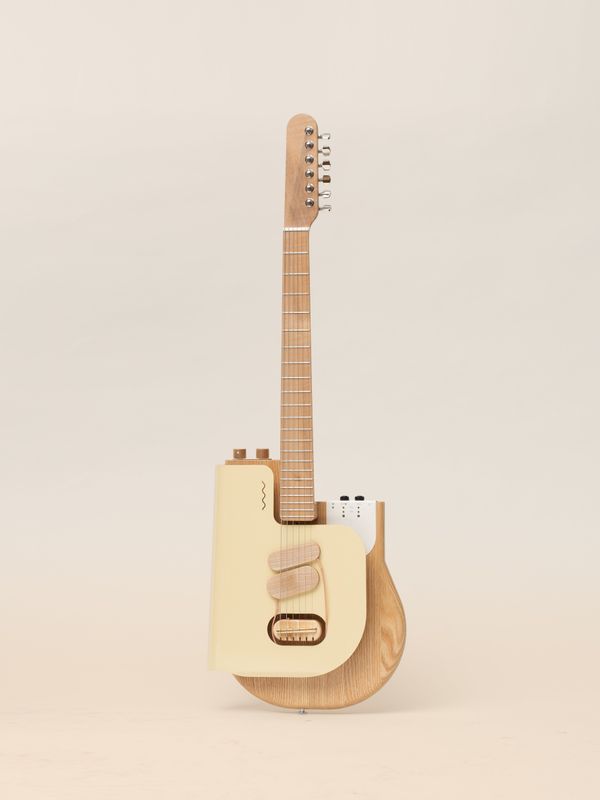


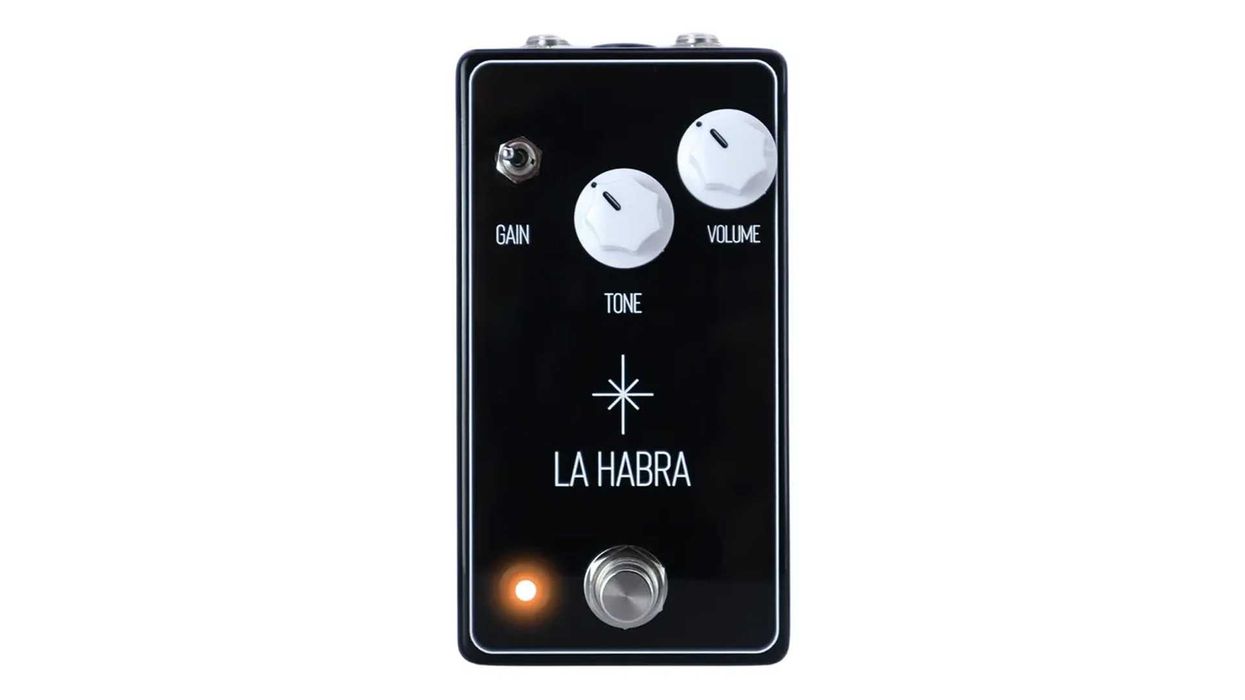
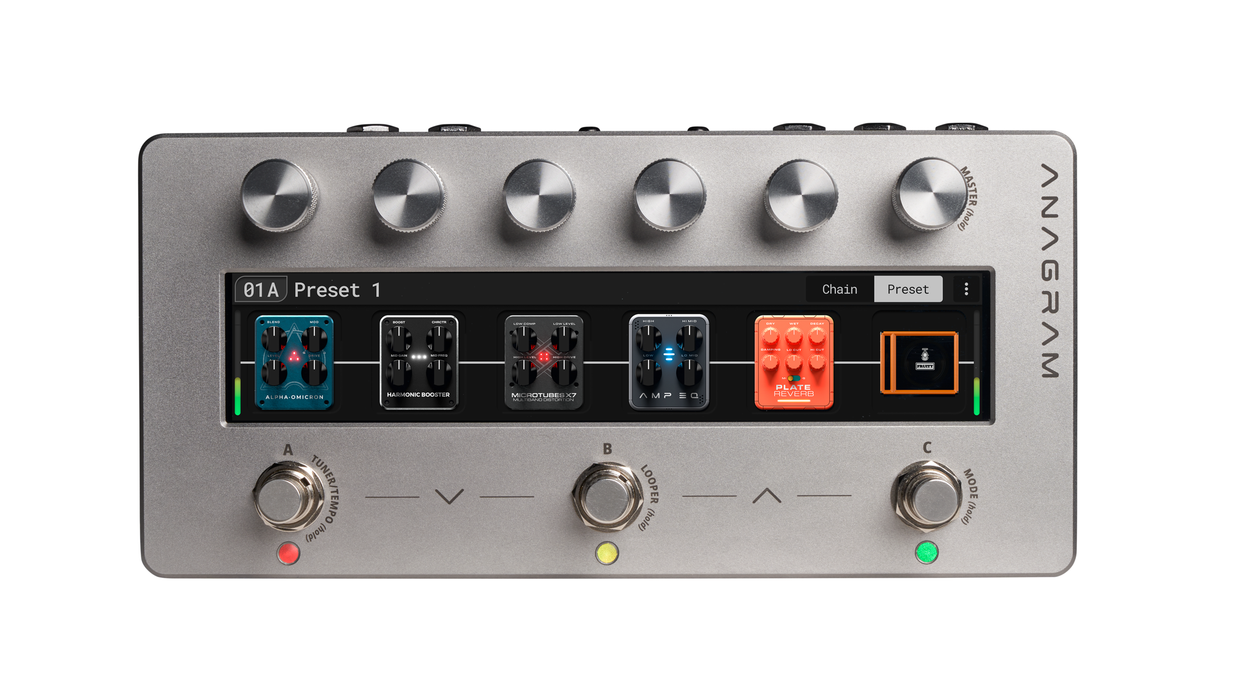
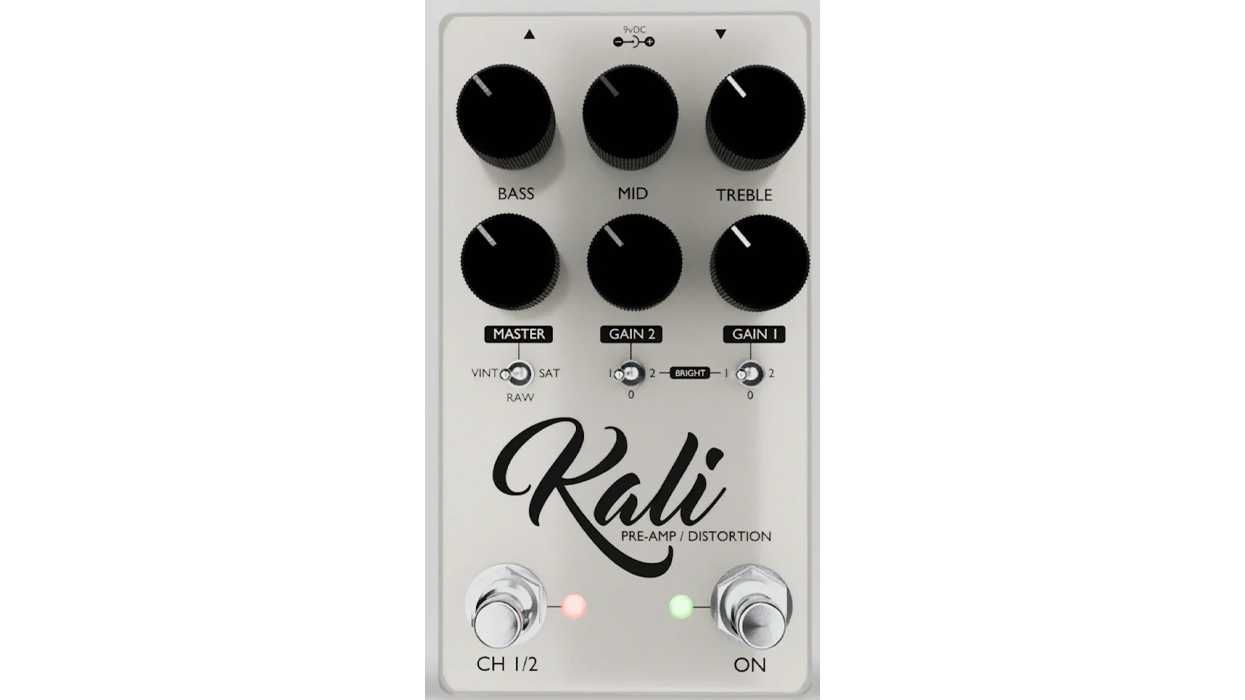


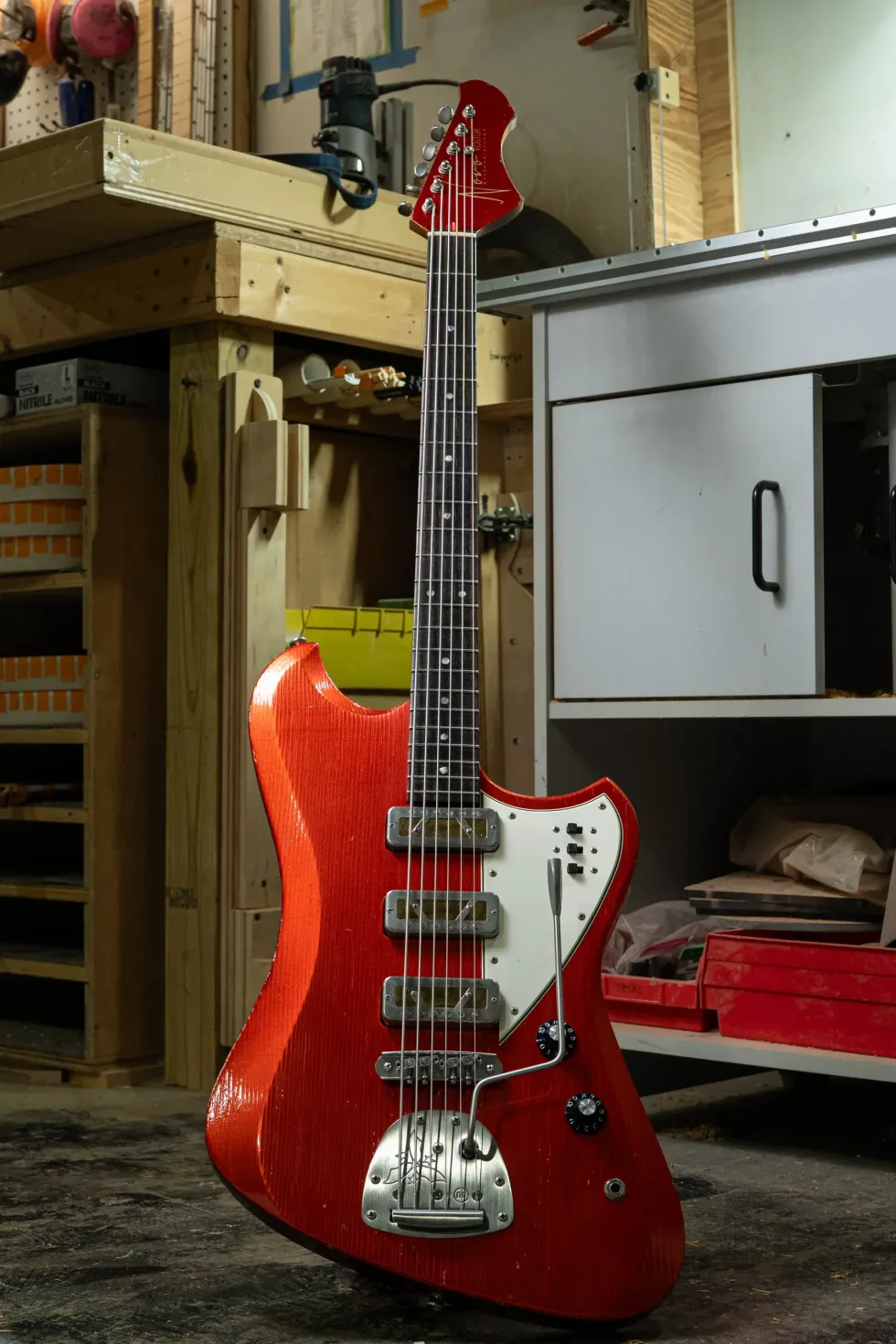 Novo Voltur B6 Review
Novo Voltur B6 Review

